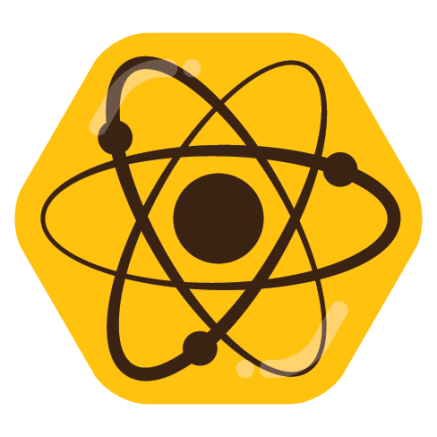

This is a sane and measured response to a terrorist attack /s Just do terrorism back 100-fold, I guess?


This is a sane and measured response to a terrorist attack /s Just do terrorism back 100-fold, I guess?


I saw a tip option at a coffee shop the other day, but it’s very unclear who’s even getting that tip. The cashier? They’re not doing anything extra, so a tip doesn’t make sense. The barista? If I get a complicated drink a tip might make sense. But I genuinely wouldn’t doubt it if this ambiguity is taken advantage of and the business just pockets the tip and no one sees it.


Genuinely wondering, who even gets the tip in that case? Or is it just a donation to the billion dollar multinational corporation?


It’s the same reason people hate ads. If you see a poster in a restaurant advertising some service, you don’t care. But ads on the internet are shoved in your face and must be dismissed to get at the content. The equivalent of a tip jar for Square would be a button that says “tip your server” next to “continue”. Instead, there’s no easy way to dismiss the tip prompt - you have to go into custom and choose 0, which makes it an active choice which must be made in order to even continue, as if the server held the tip jar directly in your face and you had to push it aside to pay at the till. It’s an imposition, one which targets neurodivergency surrounding motivation and social anxiety (eg people pleasing and depression). They took one of my spoons!


I think it’s moreso a matter of evolution. We know humanoid bodies can do anything we can do, so we start with that and make incremental improvements from there. We already do have plenty of other body shapes for robots (6-axis arms, SPOT, drones, etc) but none of them are general-purpose. Also, the robot shown in the article is pretty clearly not fully humanoid, it has weird insect legs probably because it’s easier to control and it doubles as a vertical lift.


Network effects. The “we” you’re referring to could only be like 100 million at most, the vast majority of people don’t have the technical know-how to switch, or to articulate exactly why they feel miserable every time they log in for their daily fix.


Considering prior authorization is predicated on the fact that if they reject enough requests inevitably some people won’t fight them, meaning they don’t have to pay out, I wouldn’t be surprised if they use a slightly better than chance prediction as justification for denying coverage, if they even need an actual excuse to begin with.


For what it’s worth I don’t think they’re proposing it will “solve” climate change - no single thing can. It’s millions of tiny (alleged) improvements like this which eventually add up to taking pressure off of the environment. I see this kind of attitude a lot with stuff like paper straws or biodegradable packaging, as if the idea of a small but meaningful step in the right direction is laughable. It’s fine to criticize them for the “improvement” actually being no better than the alternative, but I worry sometimes it comes across like any sort of improvement short of “solving” climate change isn’t worthwhile.


I’m not sure it even matters if he was “really” referring to Cohen, the fact that he’s under a gag order to protect people means he should STFU. Every word he says, intentionally or “not”, is potentially dangerous to the people involved. Isn’t that the whole point of a gag order? Don’t talk about the specifics of the trial, you can say it’s unfair or whatever but the specifics are too dangerous to reveal. Why aren’t his lawyers stopping him from saying this stuff? They’re going to lose by contempt of court or something at this rate. Come to think of it, Alex Jones did the same thing in his trial.


If we had access to the original model, we could give it the same seed and prompt and get the exact image back. Or, we could mandate techniques like statistical fingerprinting. Without the model though, it’s proven to be mathematically impossible the better models get in the coming years - and what do you do if they take a real image, compress it into an embedding, then reassemble it?


I respect your boldness to ask these questions, but I don’t feel like I can adequately answer them. I wrote a 6 paragraph essay but using GPT-4 as a sensitivity reader, I don’t think I can post it without some kind of miscommunication or unintentional hurt. Instead, I’ll answer the questions directly by presenting non-authoritative alternate viewpoints.


The legality doesn’t matter, what matters is that the sites will be flooded and could be taken down if they aren’t able to moderate fast enough. The only long-term viable solution is image classification, but that’s a tall ask to make from scratch.


I think a sizable portion of the Republican voter base are those whose family have voted Republican for generations and they haven’t thought enough about it to change their vote out of habit - or even worse, they’re voting because they value group cohesion over truth and everyone else around them is Republican and speaks in their rhetoric. Why else would they vote for a party so wildly against their own best interests?
I grew up with CRTs and VCRs, hard pass. There’s a certain nostalgia to it all: the bum-DOOON sound as its electron gun warmed up, the smell of ozone and tingly sensation that got exponentially stronger the closer you were, crusty visuals… But they were objectively orders of magnitude worse than what we have now, if nothing else than because they don’t weigh 150 pounds or make you wonder if watching Rugrats in Paris for the 30th time on this monster is giving you cancer. Maybe it’s because I’m techie, I’ve never really had much issue with “smart” TVs. Sure, apps will slow down or crash because of memory leaks and it’s not as customizable as I’d like, but I might be satiated just knowing that if push comes to shove I can plug in a spare computer and use it like a monitor for a media system.
I’m rooting it if it starts serving me out-of-band ads, though.
This is less an issue of “smartness” and moreso because analog signals degrade gracefully whereas digital signals are all or nothing unless specific mitigations are put in place. HDMI hits kind of a weird spot because it’s a digital protocol based on analog scanlines; if the signal gets disrupted for 0.02 ms, it might only affect the upper half and maybe shift the bits for the lower half. Digital is more contextual and it will resynchronize at least every frame, so this kind of degradation is also unstable.


You’re right, apologies. Skimmed too hard


There’s a lot of papers which propose adding new tokens to elicit some behavior or another, though I haven’t seen them catch on for some reason. A new token would mean adding a new trainable static vector which would initially be something nonsensical, and you would want to retrain it on a comparably sized corpus. This is a bit speculative, but I think the introduction of a token totally orthogonal to the original (something like eg smell, which has no textual analog) would require compressing some of the dimensions to make room for that subspace, otherwise it would have a form of synesthesia, relating that token to the original neighboring subspaces. If it was just a new token still within the original domain though, you could get a good enough initial approximation by a linear combination of existing token embeddings - eg a monkey with a hat emoji comes out, you add tokens for monkey emoji + hat emoji, then finetune it.
Most extreme option, you could increase the embedding dimensionality so the original subspaces are unaffected and the new tokens can take up those new dimensions. This is extreme because it means resizing every matrix in the model, which even for smaller models would be many thousands of parameters, and the performance would tank until it got a lot more retraining.
(deleted original because I got token embeddings and the embedding dimensions mixed up, essentially assuming a new token would use the “extreme option”).


There’s a lot of papers which propose adding new tokens to elicit some behavior or another, though I haven’t seen them catch on for some reason. A new token would mean adding a new trainable static vector which would initially be something nonsensical, and you would want to retrain it on a comparably sized corpus. This is a bit speculative, but I think the introduction of a token totally orthogonal to the original (something like eg smell, which has no textual analog) would require compressing some of the dimensions to make room for that subspace, otherwise it would have a form of synesthesia, relating that token to the original neighboring subspaces. If it was just a new token still within the original domain though, you could get a good enough initial approximation by a linear combination of existing token embeddings - eg a monkey with a hat emoji comes out, you add tokens for monkey emoji + hat emoji, then finetune it.
Most extreme option, you could increase the embedding dimensionality so the original subspaces are unaffected and the new tokens can take up those new dimensions. This is extreme because it means resizing every matrix in the model, which even for smaller models would be many thousands of parameters, and the performance would tank until it got a lot more retraining.


LLMs are not expert systems, unless you characterize them as expert systems in language which is fair enough. My point is that they’re applicable to a wide variety of tasks which makes them general intelligences, as opposed to an expert system which by definition can only do a handful of tasks.
If you wanted to use an LLM as an expert system (I guess in the sense of an “expert” in that task, rather than a system which literally can’t do anything else), I would say they currently struggle with that. Bare foundation models don’t seem to have the sort of self-awareness or metacognitive capabilities that would be required to restrain them to their given task, and arguably never will because they necessarily can only “think” on one “level”, which is the predicted text. To get that sort of ability you need cognitive architectures, of which chatbot implementations like ChatGPT are a very simple version of. If you want to learn more about what I mean, the most promising idea I’ve seen is the ACE framework. Frameworks like this can allow the system to automatically look up an obscure disease based on the embedded distance to a particular query, so even if you give it a disease which only appears in the literature after its training cut-off date, it knows this disease exists (and is a likely candidate) by virtue of it appearing in its prompt. Something like “You are an expert in diseases yadda yadda. The symptoms of the patient are x y z. This reminds you of these diseases: X (symptoms 1), Y (symptoms 2), etc. What is your diagnosis?” Then you could feed the answer of this question to a critical prompting, and repeat until it reports no issues with the diagnosis. You can even make it “learn” by using LoRA, or keep notes it writes to itself.
As for poorer data distributions, the magic of large language models (before which we just had “language models”) is that we’ve found that the larger we make them, and the more (high quality) data we feed them, the more intelligent and general they become. For instance, training them on multiple languages other than English somehow allows them to make more robust generalizations even just within English. There are a few papers I can recall which talk about a “phase transition” which happens during training where beforehand, the model seems to be literally memorizing its corpus, and afterwards (to anthropomorphize a bit) it suddenly “gets” it and that memorization is compressed into generalized understanding. This is why LLMs are applicable to more than just what they’ve been taught - you can eg give them rules to follow within the conversation which they’ve never seen before, and they are able to maintain that higher-order abstraction because of that rich generalization. This is also a major reason open source models, particularly quantizations and distillations, are so successful; the models they’re based on did the hard work of extracting higher-order semantic/geometric relations, and now making the model smaller has minimal impact on performance.
It’s important to be aware of their opinions because they quickly become policy and rhetoric while Dems do damage control and fail to fix the underlying issues Reps exploit. In this case, having an instance where they directly contradict their own “sleepy Joe” narrative can help deconstruct the beliefs of family members who have fallen for it.